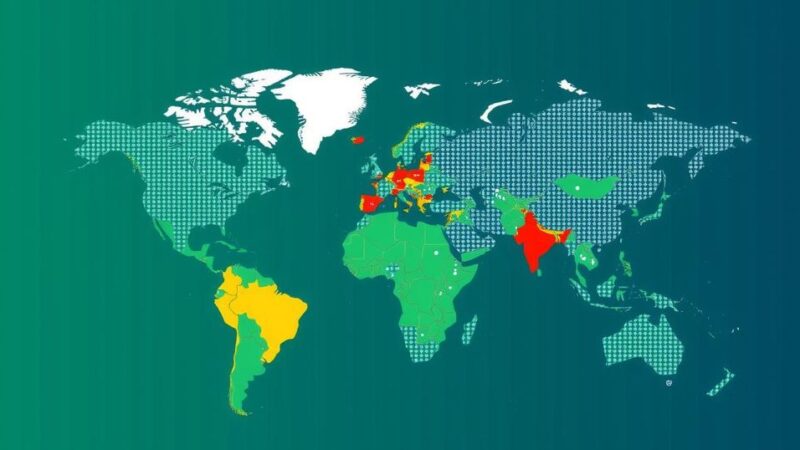Mount Adams, situated in Southwest Washington, experienced six low-intensity earthquakes in September, marking the highest monthly seismic activity since 1982. Geologists indicate no imminent eruption threat, as the quakes were minor and not felt by residents. Monitoring plans are underway to better assess future volcanic activity, focusing especially on risks such as lahars during eruptions.
Recent seismic activity has generated interest concerning Mount Adams, a volcano in Southwest Washington, which experienced six low-intensity earthquakes throughout September, as reported by the U.S. Geological Survey Cascades Volcano Observatory. This represents the most seismic events recorded in a single month at the mountain since monitoring commenced in 1982. However, officials have reassured the public that this does not indicate an imminent eruption, as the last known eruption of Mount Adams occurred between 3,800 and 7,600 years ago. The earthquakes registered magnitudes between 0.9 and 2.0, classified by geologist Holly Weiss-Racine as “extremely small,” suggesting that they would not have been felt by local residents. Historically, Mount Adams sees approximately one earthquake every two to three years, and while the recent increase is noteworthy, Weiss-Racine indicated it is not significant enough to warrant alarm. Indicators that suggest a volcano may be entering a period of unrest typically include significant increases in seismic activity, ground deformation, and a rise in gas emissions. Currently, Weiss-Racine confirmed that none of these signs are present, stating, “Right now, we’re not seeing any of those things. We’re just seeing these six earthquakes.” Volcanic activity can vary substantially, as demonstrated by Mount Rainier, which can experience several small tremors each day. Should Mount Adams erupt, geological evidence points towards the production of lava flows rather than explosive ash discharge, distinguishing it from the catastrophic 1980 eruption of Mount St. Helens. One major concern during a potential eruption of Mount Adams would be lahars, volcanic mudflows that can be generated, sometimes even by smaller eruptions. These flows can be hazardous, particularly for communities near the river valleys, such as Trout Lake, located in Klickitat County. The earthquakes observed in September appeared to occur beneath the center of Mount Adams. However, the limited number of monitoring stations—only one, located seven miles from the summit—complicates the precise identification of the epicenter and depth of these seismic activities. To address this, the Cascades Volcano Observatory has installed a temporary seismic station and plans to add two additional stations to enhance monitoring efforts. In 2019, the U.S. Congress authorized a volcano early warning system, and the U.S. Geological Survey is in the process of establishing four additional monitoring sites at Mount Adams, contingent upon receiving necessary permits from the U.S. Forest Service. Weiss-Racine noted that while approvals could be obtained within the month, substantial weather challenges may delay the installation of permanent stations until the following year.
Mount Adams, with an elevation of 12,276 feet, is one of the prominent volcanoes in Washington State and is part of the Cascade Range, which is known for its volcanic activity. Since monitoring began in 1982, the observatory has tracked various seismic activities to better comprehend the volcano’s behavior and potential threats. Despite its lesser-known profile compared to Mt. St. Helens, Mount Adams is significant not only for its historical eruptions but also for the geological hazards it presents, such as lahars. Given recent seismic activity, heightened awareness and monitoring efforts are crucial for public safety and understanding of volcanic behavior.
The recent seismic activity at Mount Adams, while noteworthy for its record number of earthquakes in a month, does not signify an immediate threat of eruption, according to officials from the U.S. Geological Survey. Continuous monitoring and further enhancements to the existing observation system are essential to remain vigilant against potential volcanic hazards. Public safety remains the principal concern, especially regarding lahar risk during any future eruptive events.
Original Source: www.seattletimes.com






